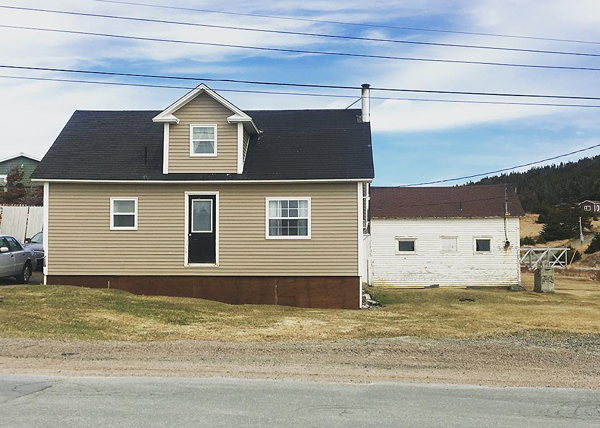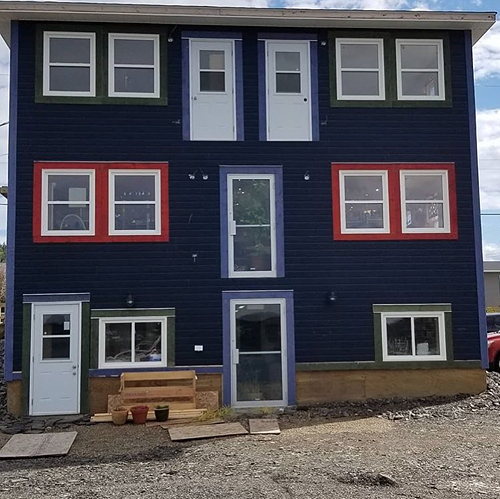Mother-In-Law Doors
A mother-in-law door is an exterior door that lacks steps leading up to it, despite needing such steps. They're a common architectural feature in Newfoundland, and no one really knows why.

The Homes and Hues blog offers one possible explanation:

An article by Lisa Moore in the Toronto National Post (Jan 16, 1999) offers another theory:
For many more examples of mother-in-law doors, check out the Mother-In-Law Doors of NL Instagram page.
via TYWKIWDBI

The Homes and Hues blog offers one possible explanation:
After Newfoundland officially joined Canada in 1949, fire regulations demanded that buildings have two exits, but most existing homes did not. So people carved a second door into their homes. However, since the regulations did not clearly stipulate that the second exit have stairs, they didn't bother with them.

An article by Lisa Moore in the Toronto National Post (Jan 16, 1999) offers another theory:
The traditional Newfoundland house — that is, the saltbox — had no steps leading up to the front door because that entrance was rarely used. Saltbox houses were designed with the kitchen in the back and the parlour in the front, facing the ocean (the main thoroughfare at the time was the water). The kitchen was the heart of the household because that was where the woodstove was located, and most families could only afford to heat one room. Everything happened there — eating and entertaining and playing cards or the fiddle. The parlour, on the other hand, was only used for special occasions.
For many more examples of mother-in-law doors, check out the Mother-In-Law Doors of NL Instagram page.
via TYWKIWDBI
Comments
Oh heck, those doors are common features across the great white north. And yes, they are still called mother-in-law (or murder-in-law) doors. In Northern Quebec I was told that they were winter exits, intended to allow people to leave a house in the event that they are snowed in.
Posted by Kate on 03/28/22 at 08:52 PM
Commenting is not available in this channel entry.

Category: Architecture